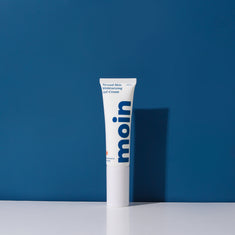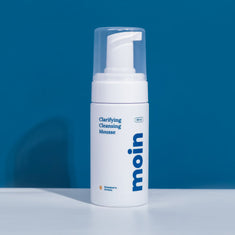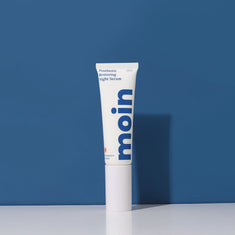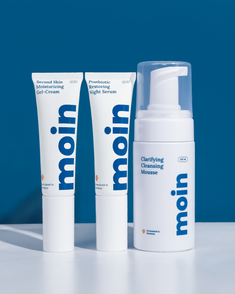Why Pollution is Bad for Your Skin
In recent years, there have been ongoing discussions about the deterioration of air quality in different parts of the world and the impact this has on different aspects of our lives.
In China, air pollution has become one of the most serious environmental problems due to the use of coal as one of the main energy sources. In larger cities, however, the air pollutant comes from motor vehicles. It is estimated that air pollution contributes to more than 1 million premature deaths in China every year. The state government has made great efforts to improve air quality, including switching from coal to natural gas and encouraging citizens to use electric vehicles instead. These efforts have paid off as Beijing, the country's second largest city, is no longer on the list of the 200 most polluted cities in 2019.
In Europe, air pollution is also a major cause of premature death and disease and is considered the second biggest environmental concern after climate change. For decades, the EU has worked to improve air quality by controlling emissions of harmful substances into the atmosphere, improving fuel quality, integrating environmental protection requirements into the transport, industrial and energy sectors, and requiring Member States to develop a program at national level to meet emission reduction and energy efficiency commitments.
What causes air pollution?
Air pollutants can be caused by natural processes such as volcanic eruptions and forest fires. However, this occurrence is rather rare and usually has only local effects. Most air pollution is unfortunately caused by human activities. Industrial work, vehicle exhaust, construction, mining, electric power plants and cigarette smoke can produce toxic chemical compounds that degrade air quality.
Some household products or seemingly innocent items such as paint, glue and cleaning products can contain potentially harmful chemicals that contribute to further exacerbating this problem.
Air pollutants
In industrial civilization, the most common air pollutants are toxic gases such as sulphur oxides, nitrogen oxides, carbon monoxide and poly cyclic hydrocarbons, which are produced as a by-product of burning fossil fuels. They are harmful to our health and can cause serious problems such as breathing difficulties, nausea, fertility problems in women and even cancer.
Air pollutants also occur in solid form as particles suspended in the air, with metals and organic compounds being the main components. These particles can be of different sizes, namely 10 micrometers or less (PM10) or 2.5 micrometers or less (PM2.5). Construction sites and road building are the main sources of PM. Therefore, it is important that a construction worker or those who live near these sites wear the proper mask.
Similar to toxic gases, particulate matter can pose a health risk to humans due to its size, making it particularly easy to enter the body. Exposure to PM can cause coughing, respiratory irritation, chronic bronchitis and lung cancer.
Another important pollutant is ozone. O3 exists in the stratosphere and in the troposphere. While ozone in the stratosphere is essential to protect us from harmful UV radiation, ozone closer to the ground.... not so much. Ground-level ozone, as it is called, is mostly formed by the combination of nitrogen oxides with volatile organic compounds. When UV photo-activated, these molecules can produce this type of ozone.
Air pollution and the effects on the skin
As the largest organ in our body, the skin plays the key role as a barrier to protect us from external threats, which includes harmful pollutants. However, its ability does not make the skin immune to damage. Environmental stressors can disrupt the function of the skin barrier, reducing the antioxidants such as vitamin C and vitamin E on the skin and disrupting the lipids, DNA and proteins present in the skin layer. Thus making it vulnerable and further causing some problems like reduction in skin micro flora, skin dryness and excess sebum secretion.
When inhaled or ingested, air pollutants can also affect skin health as they are distributed throughout the body by systemic circulation and can reach the dermis and epidermis layer.
One of the main problems caused by air pollutants is skin ageing. Ozone and nitrogen oxides, for example, are able to increase the activity of the enzyme matrix metalloproteinases (MMPs) and trigger lipid peroxidation, which decreases the production of collagen and elastin. As we all know, collagen and elastin are very important to maintain a healthy skin structure and keep its elasticity. The decline of both materials can lead to the formation of fine lines and wrinkles.
UV radiation is another pollutant known to be one of the causes of premature ageing. UVA, which has the wavelength of 320-400 nm, can penetrate deep into the stratum basale and dermal fibroblasts and induce dark spots and hyper pigmentation. While UVB, although it can only penetrate to the epidermis, is still harmful to the skin and responsible for burning and even skin cancer.
Anti-pollution skincare products
With numerous studies and reports revealing the real danger from air pollution, many cosmetic brands have decided to develop products that can protect the skin from these dangerous substances with their anti-pollution properties.
However, due to the multiple negative effects on the skin, it is almost impossible to develop a single formula to effectively combat the problem. Therefore, it is still essential to use and combine different ingredients or approaches that can solve the problem caused by pollutants to any skin.
Below are some of the ingredients that are known to have some benefit in restoring the skin to a healthy state:
Active charcoal
If you live in a big city and spend a lot of time outside, it is crucial to take the cleansing game seriously. Nowadays, double cleansing is known to be the effective way to remove sebum, dirt and other impurities on the skin.
To go even further, one can incorporate activated charcoal into their skincare routine. This fine black powder has been treated to create a large surface area so that it can form a dispersing force with other substances, effectively absorbing all the dirt present in the pores.
Activated charcoal is safe to use even on sensitive skin and is particularly beneficial for acne-prone skin. The antibacterial properties of activated charcoal can help reduce excess sebum and clear acne. Use activated charcoal as a mask once or twice a week to deeply cleanse and detoxify the skin.
Camu-Camu
Ingredients with antioxidant properties are crucial for restoring skin barrier function. Camu-camu is an excellent ingredient to do just that. Camu-camu is an acidic berry native to the Amazon rainforest.
It is considered a superfood because it is high in antioxidants such as phenolic compounds and vitamin C. There are typically 3g of vitamin C in 100g of camu-camu, more than in orange. This fruit is also a source of minerals such as calcium, zinc, magnesium, sodium, and potassium, as well as fatty acids. In some studies, camu-camu has been shown to have anti-inflammatory properties that help the skin deal with irritation, redness and acne.
Red algae
Red algae are most commonly used in skin care products because of their protective properties. Unlike the types of algae we know, which are typically green in color, Gellidium cartilagineum is red and gets its color from phycoerythrin and phycocyanin. Red seaweed extract contains high levels of sulphated polysaccharides, peptides, carotenoids, fatty acids, and amino acids and can block UVA radiation and protect the skin against pollution by improving the skin's barrier function and moisturizing ability.
White tea
Although they come from the same plant, Camellia sinensis, white tea leaves are harvested at a much earlier stage and are less processed than green tea or black tea. This results in white tea having higher levels of flavonoids and polyphenols called catechins, Similar to camu-camu, white tea is also a powerful antioxidant and is often found in anti-ageing products. It has the ability to protect the skin from the damaging effects of UV rays to prevent the breakdown of collagen and elastin.
Niacinamide
Niacinamide is a form of vitamin B3. When applied topically, this compound can help build proteins and a lipid barrier to maintain skin moisture and regulate oil production. This makes niacinamide particularly beneficial for oily and dehydrated skin. In addition, some reports suggest that a 5% concentration in the formula is effective in treating hyper pigmentation and damage associated with sun exposure.
Licorice root
This plant has been used as a medicine for thousands of years for its health benefits. Licorice is native to Africa and some parts of Asia. It contains compounds called liquiritin and glabridin, whose main benefit is to inhibit the production of excess melanin from UV exposure. A type of natural phenol called licochalcone is also found in licorice root and has some antibacterial properties.




